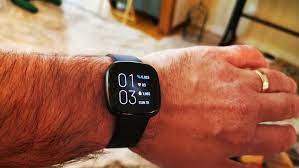Wearable devices, such as fitness trackers and smartwatches, have made it easier than ever to monitor various health metrics and track progress toward fitness goals. Meanwhile, wellness programs offer a holistic approach to wellness by incorporating a variety of activities and resources, such as nutrition education and stress management techniques. In this blog, we will explore the benefits of wearables and wellness programs and how they can help individuals achieve their health and fitness goals.
Contents
What Are Wearables And Wellness Programs?
Wearables refer to electronic devices that can be worn on the body, typically as accessories or clothing. They can track and monitor various aspects of a person’s health and fitness. Some common examples of wearables include fitness trackers, smartwatches, heart rate monitors, and sleep trackers. These devices can collect data on metrics such as steps taken, calories burned, heart rate, sleep quality, and more. When used together, wearables and wellness programs can provide a powerful tool for individuals looking to improve their health and wellness.
How Wearable Gadgets Works?

Wearable gadgets work by using a combination of sensors, software, and connectivity to collect data on various aspects of a person’s health and fitness. The specific technology used in wearable devices can vary depending on the device and its intended use, but some common features include:
- Sensors: Wearables typically incorporate a variety of sensors to collect data on metrics such as heart rate, steps taken, and sleep quality. Some devices may also include sensors to track metrics such as blood pressure, oxygen saturation, and body temperature.
- Software: The user’s data in wearables is typically analyzed and processed by software algorithms, which can provide insights into things like fitness level, sleep quality, and overall health.
- Connectivity: Many wearables can get connect with other devices, such as smartphones or computers. This can allow users to track their progress over time and receive notifications or alerts.
Overall, wearable gadgets work by collecting data on various aspects of a person’s health and fitness and using software algorithms to analyze and interpret that data. This information can then be used to track progress toward fitness goals, identify potential health issues, and promote overall wellness.
Pros And Cons of Wearable Devices
Wearable gadgets, like any technology, have both advantages and disadvantages. Here are some of the pros and cons of wearable gadgets:
Pros
Firstly, look at the following advantages of it:
- Data tracking: Wearables allow individuals to track various aspects of their health and fitness, such as steps taken, heart rate, and sleep quality. This data can help individuals monitor their progress toward fitness goals and identify areas for improvement.
- Motivation: Wearables can provide motivation for individuals to stay active and make healthier choices. Seeing progress towards fitness goals and tracking daily activity can be motivating and encourage continued engagement with a healthy lifestyle.
- Convenience: Wearables are available to wear on the body, making them a convenient way to track health and fitness data without requiring additional equipment or devices.
- Personalization: Wearables can provide personalized recommendations based on the data collected, helping individuals tailor their fitness routines and make more informed choices about their health.
Cons
Now, check these disadvantages:
- Cost: Wearables can be expensive, with some high-end devices costing hundreds of dollars. Additionally, wearables may require regular maintenance or replacement, adding to the cost over time.
- Privacy concerns: Wearables collect a lot of personal data, which can be a privacy concern for some individuals. Data breaches or hacks can result in personal health information in risk.
- Reliability: Wearables may not always provide accurate data, leading to inaccurate tracking of health and fitness metrics.
- Dependency: Some individuals may become overly reliant on their wearable devices, relying on them to make decisions about their health and fitness rather than listening to their own bodies.
Overall, while wearable gadgets offer many benefits for tracking health and fitness data, individuals should carefully consider the potential drawbacks before investing in one. It is important to find a device that meets personal needs and priorities and to prioritize privacy and security when using wearables.
How Does The Wearables And Wellness Programs Function?

Wearables and wellness programs function together to provide individuals with a comprehensive approach to health and fitness. Here’s how they work:
- Wearable devices collect data: Wearable devices, such as fitness trackers or smartwatches, collect data on various aspects of a person’s health and fitness, such as steps taken, heart rate, and sleep quality. This data is typically getting saved through sensors built into the device.
- Data is analyzed by software: The data collected by wearables is typically analyzed by software algorithms that can provide insights into a fitness level, sleep quality, and overall health.
- Wellness programs incorporate data: Wellness programs can incorporate data collected by wearables to provide personalized recommendations and track progress toward health and fitness goals. For example, a wellness program may use data from a fitness tracker to recommend specific types of exercise or adjust calorie intake based on activity level.
- Wellness programs offer resources and support: Wellness programs can offer a variety of resources and support to promote overall well-being. This can include things like exercise classes, nutrition education, stress management techniques, and mental health counseling.
- Wearables track progress: Wearable devices can track progress towards fitness goals over time, providing users with a visual representation of their progress and encouraging continued engagement with the wellness program.
Overall, wearables and wellness programs function together to provide individuals with a personalized approach to health and fitness, incorporating data analysis, resources, and support to promote overall well-being.
Conclusion
In conclusion, wearables and wellness programs offer a powerful tool for individuals looking to improve their health and fitness. Wearables, such as fitness trackers and smartwatches, allow individuals to track various aspects of their health and fitness, while wellness programs provide additional resources and support to promote overall well-being. As technology continues to advance, the potential for wearables and wellness programs to improve health outcomes and promote overall wellness only continues to grow.
Employee wellness programs are the key to improving employee motivation, productivity, and retention. At MantraCare, we have a team of health experts, counselors, and coaches who serve corporate employees with 10+ wellbeing programs including EAP, Employee Diabetes Reversal, Corporate MSK, Employee Fitness, Corporate Yoga, and Employee meditation.
